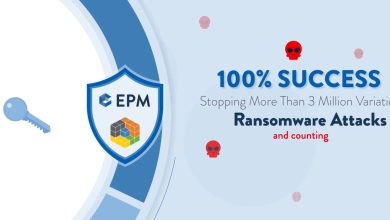Beyond Legislation: How Businesses Can Build Resilient Cybersecurity Frameworks

By Scott Hagenus, Security Solutions Director, Crayon
Cyber threats are escalating across Southeast Asia and Australia, driven by increasingly sophisticated fraud operations and organised crime networks. As the United Nations Office on Drugs and Crime highlights, cyber fraud operations are expanding at a troubling pace across the region, posing serious risks to businesses and individuals alike. Meanwhile, governments are responding across Southeast Asia, with proposals aiming to improving resilience against emerging threats.
Yet, success demands more than meeting compliance—businesses must take ownership of their security strategies by leveraging platforms, technology providers, and external expertise to protect their operations effectively.
While regulatory frameworks are essential, compliance alone is not sufficient to combat these evolving threats. Businesses must adopt proactive strategies that go beyond meeting legislative requirements. Here are five essential steps businesses should consider to strengthen their defences against fraud and cyber threats, with an emphasis on leveraging the power of platforms and technology providers to drive success.
- Strengthen Verification and Identity Measures
Verification is a crucial first step in preventing fraud. Businesses, particularly those operating in the digital space, must implement stringent identity verification systems for both their users and their service providers. This includes verifying the identity of advertisers and customers to ensure that only legitimate parties are engaging with them. Cloud-based identity management solutions and two-factor authentication (2FA) systems are essential tools that platforms can offer to help businesses bolster their verification processes. - Monitor for Suspicious Activity in Real Time
Scammers often exploit vulnerabilities during periods of high activity or weak surveillance. Businesses need to deploy real-time fraud detection systems, which use artificial intelligence (AI) and machine learning (ML) algorithms to monitor transactions, flag suspicious behaviour, and take immediate action. For example, Merlot Aero, a SaaS provider for airline operations, implemented AI-powered solutions to continuously monitor their systems, significantly reducing fraud risks by detecting unusual patterns in real time. Companies that invest in similar technology, or work with cloud providers offering real-time fraud detection, can significantly reduce their risk of falling victim to fraud. - Deploy Blockchain and Decentralised Technologies
Blockchain technology offers transparency and security that is invaluable in combatting fraud. By recording transactions in a tamper-proof ledger, blockchain allows businesses to ensure that no fraudulent alterations occur. This is especially useful for industries with high transaction volumes such as banking, e-commerce, and supply chain management. For example, Rajah & Tann, a leading law firm in Singapore, adopted a blockchain-integrated solution that streamlined its high-volume transaction management, reducing operational inefficiencies and enhancing data security. Cloud providers and platforms can play a critical role by integrating blockchain-based solutions into their service offerings, enabling businesses to maintain trust and security within their ecosystems. - Adopt a Unified Ecosystem Approach
While scammers often target the weakest link in a business’s ecosystem, it is vital that businesses work together with technology providers, banks, and even competitors to create a united front against fraud. Establishing cross-industry partnerships can enhance the sharing of threat intelligence and bolster defences. For example, the collaboration between Rajah & Tann and Microsoft allowed the legal firm to integrate advanced AI solutions to protect its high-volume transactions, benefiting not only their operations but also setting a standard in their industry. This partnership improved security and efficiency, demonstrating the value of collaboration across sectors. Platforms and service providers must not only offer tools but also foster collaboration between all stakeholders to ensure a comprehensive approach to fraud prevention. - Collaborate with a Trusted Solutions Provider
Partnering with a trusted IT solutions provider is crucial for staying ahead of evolving threats. These providers not only educate teams on best security practices but also offer ongoing support to address emerging risks. Many businesses, for instance, have successfully implemented AI-driven systems for real-time monitoring through partnerships with cloud providers. This approach ensures robust security while also offering continuous education and support to technical teams. As companies adopt AI, it’s essential to help teams understand its fit within their environment and address potential pain points. For larger businesses adopting large-scale AI models, an embedded critical risk management program is imperative. Effective risk management involves not only identifying and addressing the most significant risks but also ensuring that mitigation efforts are properly executed and continuously monitored, keeping defences strong against fraud and emerging threats.
Along with utilising new government regulations, businesses must actively engage in building their defences. By implementing robust verification processes, using advanced AI technologies for fraud detection, educating their workforce, exploring blockchain solutions, and collaborating across industries, businesses can stay ahead of fraudsters and protect their customers. Platforms and technology providers have a vital role in enabling and supporting these efforts, helping businesses to be resilient in an increasingly complex digital landscape.




